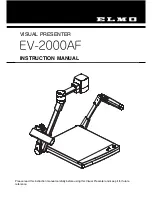
9-98
Object identification (labeling) by binary conversion
9
Objects
No.1
No.2
No.3
No.5
No.4
No.6
Image
capture
Convert it to
a binary image
Object identification
(labeling and numbering)
Measure the area, center of gravity,
main axis angle, fillet diameter, and circumference
Purpose
Example
When there are several objects and the measuring position is arbitrary, the
presence or absence of objects and the size of the objects can be determined.
· The specified pixel area is converted to a binary image. The number of objects, total
size of the white area (the objects) and the area, center of gravity, main axis angle,
fillet diameter, and circumference of each white area can be measured.
Counting the number of food products or parts, measuring the sloped angle or
center of gravity of parts, and measuring the size of food products
[Measurement of 6 objects]
[Measured results]
· Object identification (labeling
and numbering), number of
objects present, total area
· Area, center of gravity, main
axis angle, fillet diameter, and
circumference of each object
(No.1 - No.6).
· Inspection sequence
Application
9-9 Object identification (labeling) by binary conversion
















































